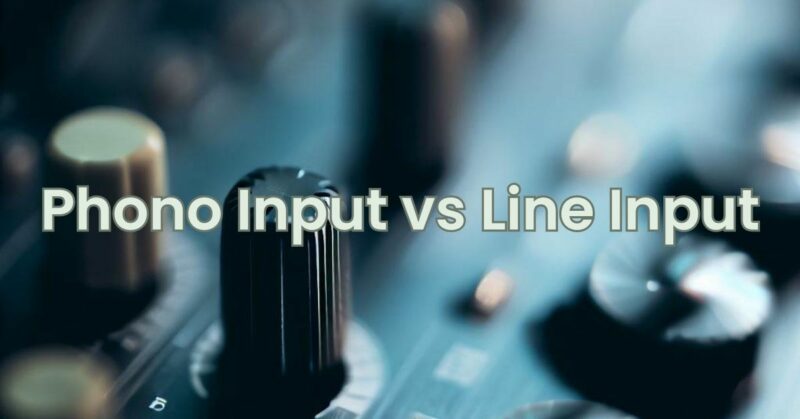When connecting a turntable or record player to an audio system, one common consideration is whether to use the phono input or line input on the amplifier or receiver. Understanding the difference between these two inputs is crucial for proper audio playback and preserving the integrity of the sound. In this article, we will explore the distinctions between phono inputs and line inputs, helping you make an informed decision about which input to use for your specific audio setup.
Phono Input: The phono input is designed specifically for turntables or record players. Here are some key points to consider:
- RIAA Equalization: Vinyl records are physically cut with a specific equalization curve known as the RIAA curve. The phono input includes a built-in phono preamplifier that applies the necessary RIAA equalization, correcting the frequency response and restoring the original audio signal captured on the record.
- Amplification: In addition to equalization, the phono input provides the required amplification to bring the low-level signal from the turntable’s cartridge up to line level. The signal from a turntable’s cartridge is much weaker compared to other audio sources, and the phono input compensates for this.
- Impedance Matching: The phono input also matches the impedance of the cartridge, ensuring optimal performance and accurate playback. Different cartridges have varying impedance characteristics, and the phono input is specifically designed to handle these variations.
Line Input: The line input is a standard input found on amplifiers, receivers, and other audio equipment. Here are some factors to consider:
- Line-Level Signal: The line input expects a line-level signal, which is the standard signal level outputted by most audio sources such as CD players, media players, or streaming devices. Line-level signals are already preamplified and equalized, so they do not require the additional amplification or equalization provided by the phono input.
- External Preamplification: If you connect a turntable to a line input, you will need an external phono preamplifier. This preamp will apply RIAA equalization and provide the necessary amplification to bring the turntable’s signal to line level before connecting it to the line input.
Considerations for Decision-making:
- Equipment Compatibility: Check if your amplifier or receiver has a dedicated phono input. If it does, using the phono input is the most straightforward option. However, if there is no phono input available, utilizing the line input with an external phono preamp is necessary.
- Sound Quality: The phono input is designed specifically for turntables and ensures accurate playback by applying the required equalization and amplification. Utilizing the phono input can provide better sound quality compared to using the line input with an external preamp, as external preamps may vary in quality.
- Convenience: If your turntable has a built-in phono preamp, you can connect it directly to the line input without requiring an external preamp. This option can be more convenient and cost-effective, particularly for entry-level turntables.
The choice between using the phono input or line input depends on your specific audio setup and equipment. The phono input is specifically designed for turntables, providing the necessary RIAA equalization, amplification, and impedance matching. If your amplifier or receiver has a phono input, it is the most straightforward option. However, if a phono input is not available, utilizing the line input with an external phono preamp allows you to connect your turntable to the audio system. Consider equipment compatibility, sound quality preferences, and convenience when making your decision. By understanding the differences between phono inputs and line inputs, you can ensure optimal audio playback from your turntable setup.


